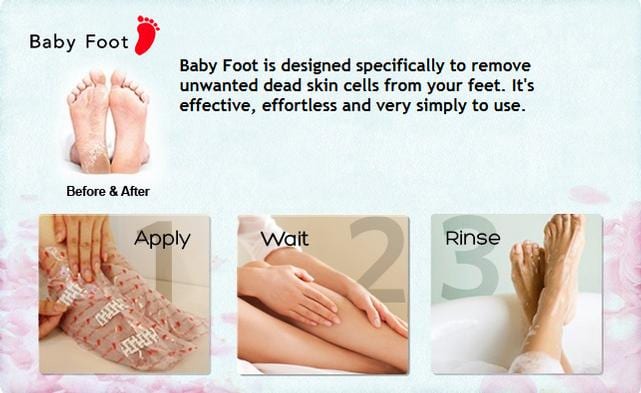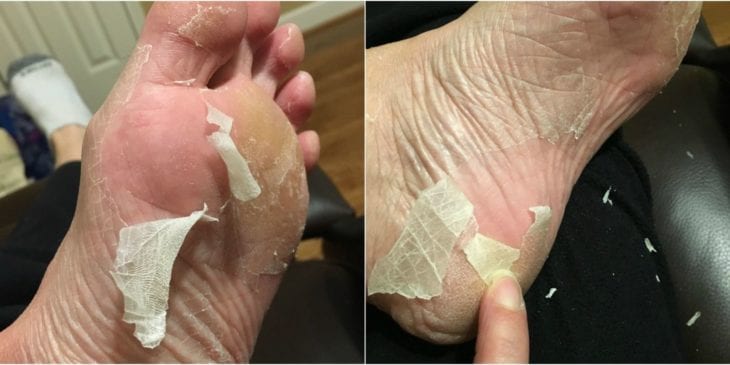Feet, for the most part, are disgusting. They have a tendency to smell like corn chips when clad in socks that don’t breathe. Toes are helpful for walking, obviously, but aesthetically aren’t much to look at. Feet smell. Feet get hot. An exposed foot, at the workplace, or god forbid, on the subway, removed from its shoe home and exposed to the elements, is offensive. Most feet have the same standard issues — calloused in places, bunion-ed in others, dry patches, etc. Having nice, smooth, pleasant feet feels like a subtle marker of privilege or at least the money to maintain regular pedicures. If your free are smooth and free of the dead skin and garbage that most of us walk on, then you live a life that’s very different from the subway-gym-home-bar life that the rest of us lead.
For the record, my feet are gross. Years of dancing in high school has left them calloused in places that are helpful for executing chainé turns across a wooden floor but less helpful for looking decent in any pair of shoes that aren’t boots. I’ve spent my fair share of time sitting in a massage chair watching NY1 while a woman gamely attempts to scrub a summer’s worth of barefoot beach visits from my soles, to no avail. I have a PedEgg, but abandoned it after I realized both its inefficacy and how the foot shavings resemble Parmesan cheese. I want smooth feet because I want to avoid causing grievous bodily harm to anyone who happens to feel my heel rake across their calf. Nothing is grosser than the visual of a yellowed, crusty heel peeking out of the back of a pair of sandals. That’s what I thought until I encountered BabyFoot, a miracle product that is the most disgusting way to achieve the smooth, baby soft feet of your dreams.

Source: Columbia Laser and Aesthetics
BabyFoot is basically a really intense glycolic peel for your feet. The main ingredient is alpha hydroxy or fruit acid, which penetrates the scaly layers of dead skin on your feet and breaks them down from the inside. The process is simple. After rinsing your feet, tape them into plastic booties that are squishy with a thick, clear liquid, throw some socks over the whole thing, if you’re bold, and settle in for an hour. Once the hour is up, rinse your feet and ready yourself for the skin to start peeling off in great sheets. This doesn’t happen right away though — the payoff comes days later, but I promise you, once its all over, your feet should be soft and smooth and ready for someone to fondle at your discretion.
When faced with BabyFoot, I knew that my approach had to be serious. The plastic booties come with a strip of insufficient tape to seal them shut around your ankles, so I found some masking tape and wrapped my ankles. The booties weren’t going anywhere, but just to make extra sure, I found a pair of hiking socks that serve as slippers in the winter and pulled them over my feet. Properly secure, I plunked down on the couch and watched a movie for an hour and a half — the extra time was necessary, I thought. My feet are truly horrible, so the extra half hour couldn’t hurt. When the movie was done and I wanted free use of my feet again, I took the booties off, rinsed in the tub and went about my night.
Nothing really happened the first couple of days. My feet felt very dry, but as per the instructions, I resisted the urge to moisturize. I don’t really remember when my feet started to peel, but once it started, it seemed to never end. One day, about four days after I did the treatment, I examined the bottom of my foot and saw the edge of a piece of skin. Curious, I tugged on it slightly and watched in horror as it separated from my foot with ease, like sunburn or the skin off a bruised peach. Amelia also did BabyFoot a few months before me and was disgusting enough to document this stage on video:
This was just the beginning. The next week or so flew by in a whirlwind of dead skin, soundtracked by horrified shrieks from my sister who watched me as I sat on the couch, absentmindely picking my feet.
“PLEASE do not do that on the couch,” she’d say, slapping my hand.
I couldn’t stop. There is nothing more satisfying than watching years of dead skin curl away from the soles of your feet, revealing skin that looks too pink to be real underneath. The peeling is addictive at first, partially because its so satisfying and partially because you want to get it over with so your feet don’t look like they’re molting. (Just check out the Google image search results to see how intense the peeling can get.) I left piles of dead skin wherever I went: near my desk; on the roof; on a paper towel on the coffee table that I almost forgot to throw away. The tops of my feet peeled. The skin around my toes peeled. In a particularly irksome turn of events, my ankles took the longest to recover. I walked around for weeks with what looked like a case of clinical ash, as if my feet had never seen lotion.

Source: Apartment Therapy
What remained after the great shedding was complete was a foot, clean and pink and tender, much smoother than what previously existed. My hooves were like that of a newborn baby. They were sensitive. Wearing shoes hurt, probably because the carapace of dead skin and callouses was finally gone. But it was worth it.
“Your feet are no longer disgusting, I guess” my sister remarked after the nightmare was over. “Still, keep them away from me.”
I make no promises. BabyFoot won’t prevent your feet from returning to their natural state — cracked, calloused, horrible — eventually, but it will keep them smooth and cute for at least a couple of months. Then you can begin the entire delightful process all over again. What, I ask, is better than that?
[Amazon: Babyfoot]Original by: Megan Reynolds
